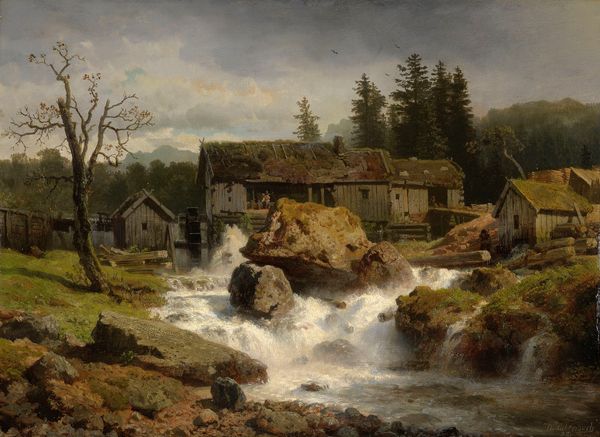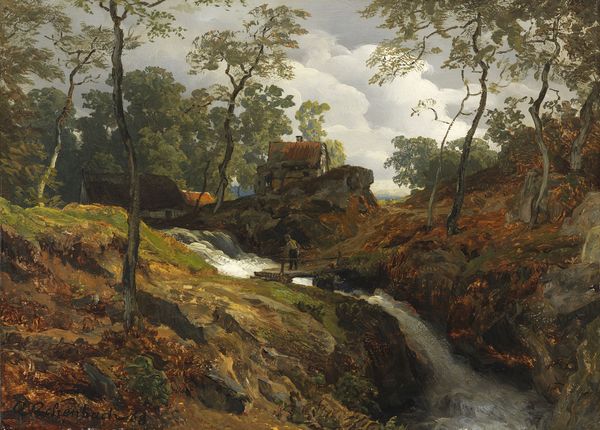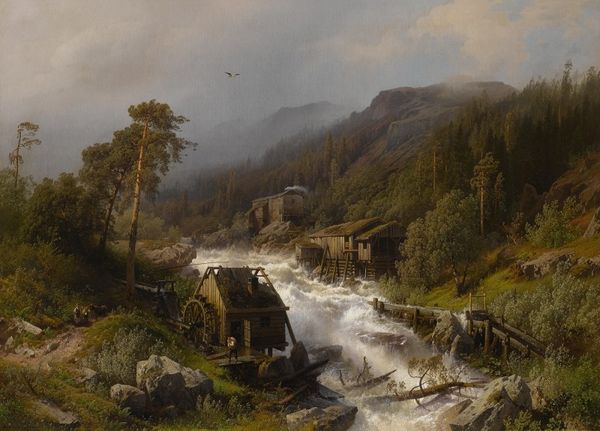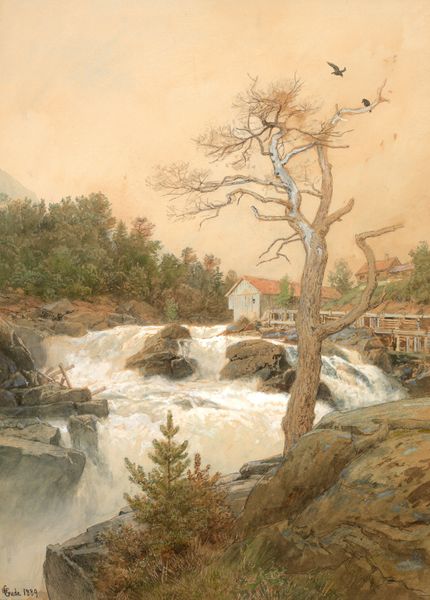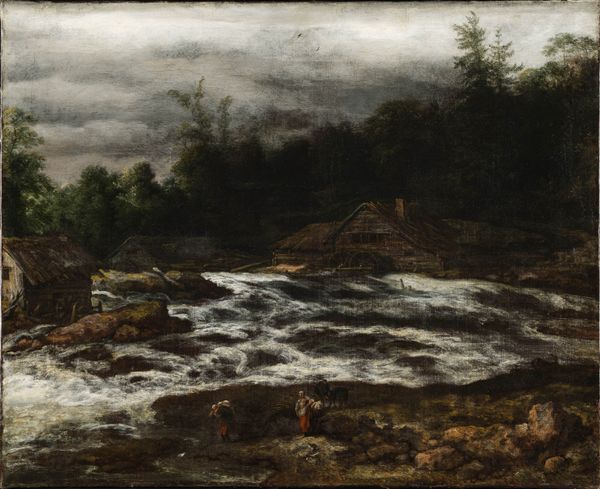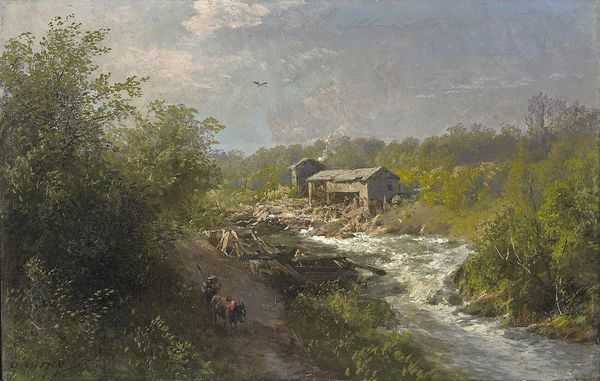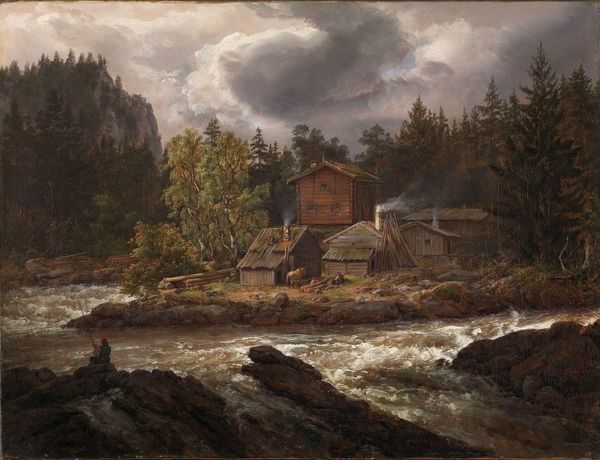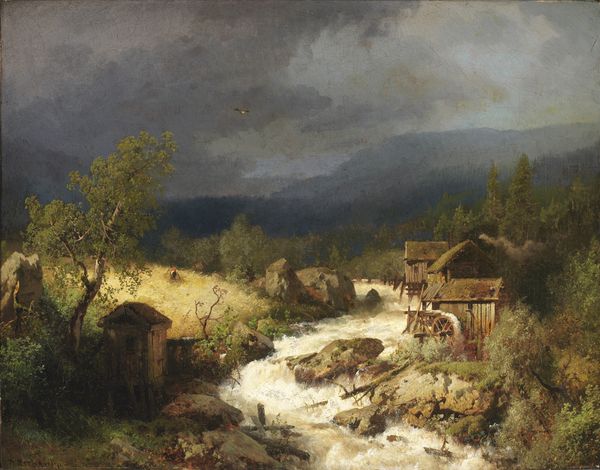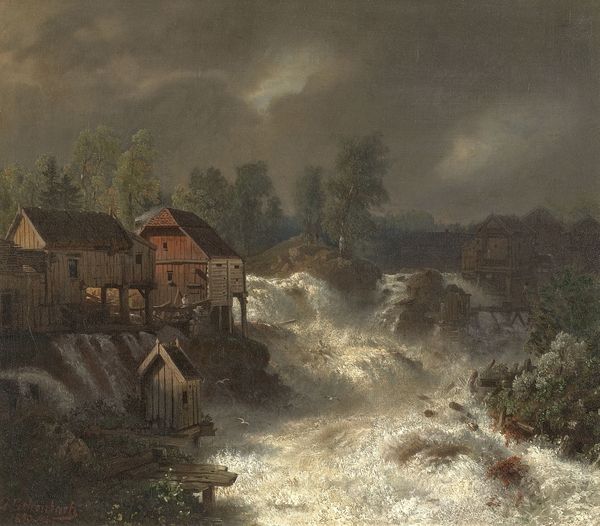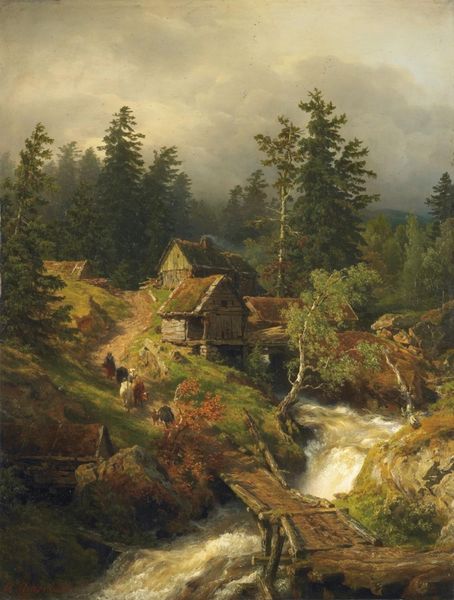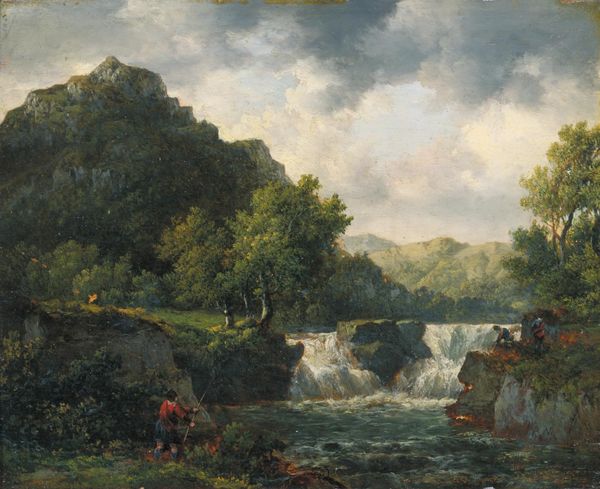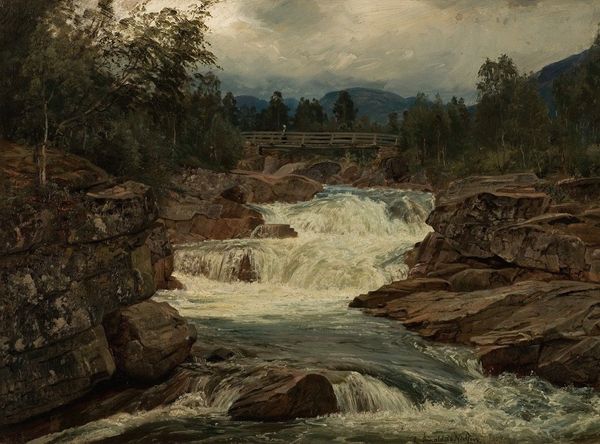
Copyright: Public domain
Andreas Achenbach painted this mill in the forest most likely in the mid-19th century. In the 1800s, Germany was undergoing rapid industrialization, and landscape paintings like this one were a way of reflecting on the changing relationship between people and nature. The image creates meaning through a set of contrasting visual codes: the sublime beauty of untouched nature versus the industrial functionality of a mill. Watermills were vital infrastructure, but were under threat. Did Achenbach's artwork comment on the social structures of its time? It's possible he was self-consciously conservative, looking to critique the institutions of art in favor of more traditional ways. In order to find out, we'd need to consult a wide range of research resources, including exhibition reviews, letters, and other documents. These can help us reconstruct the context in which Achenbach's art was made and viewed.
Comments
No comments
Be the first to comment and join the conversation on the ultimate creative platform.
